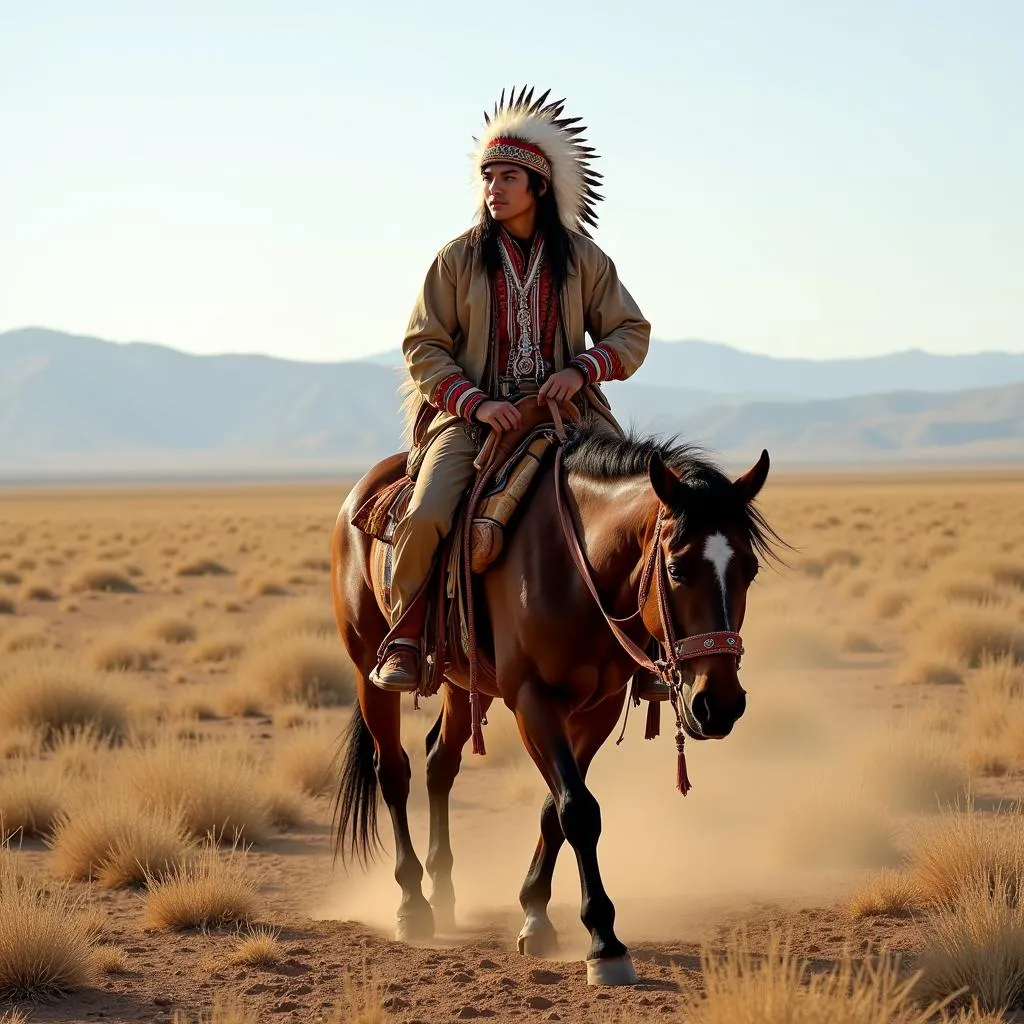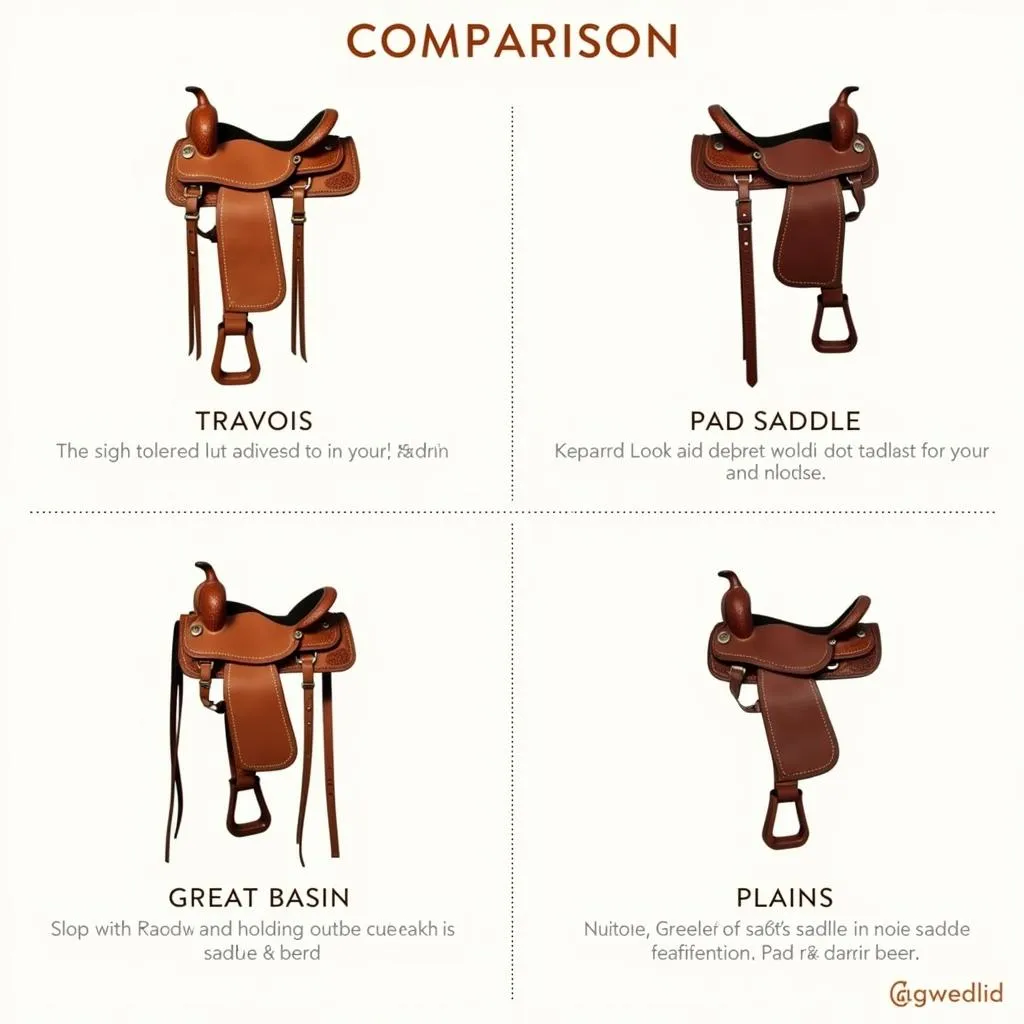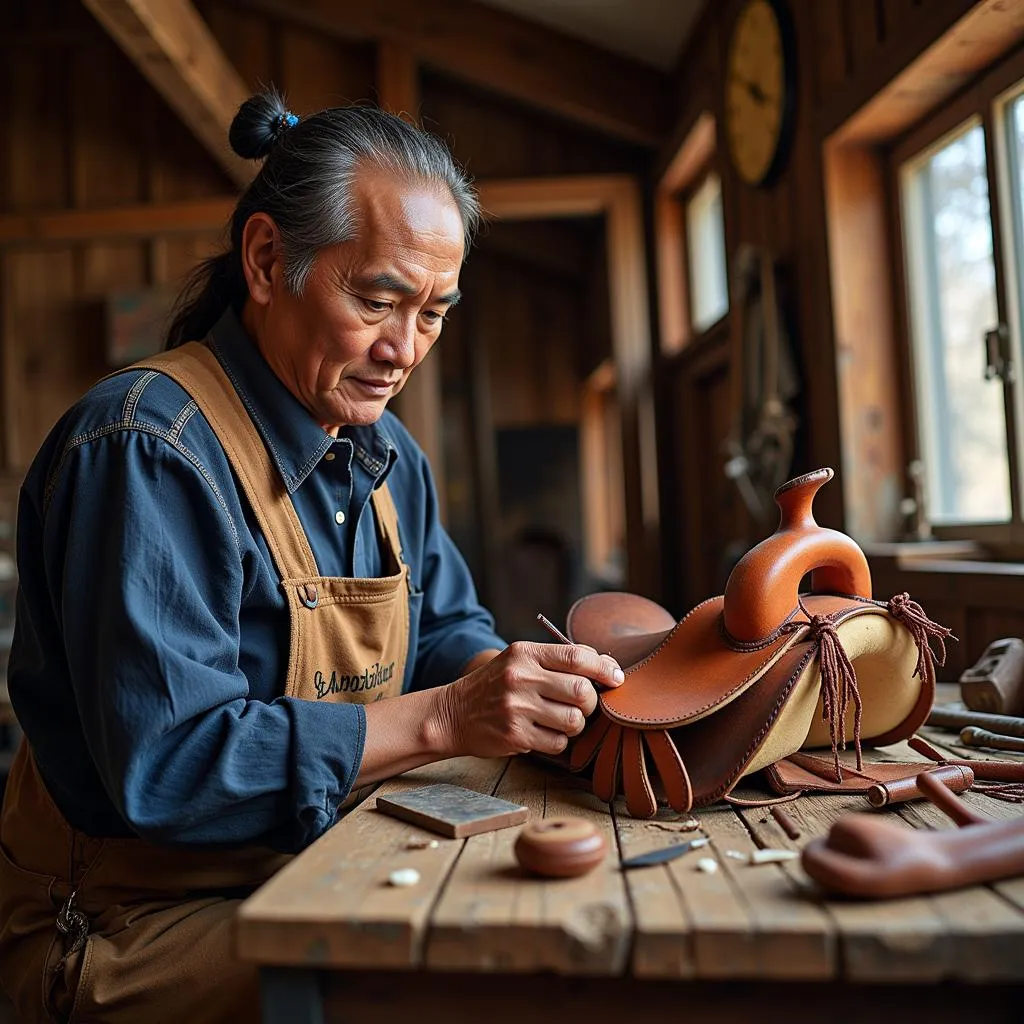Native American Horse Saddles, unlike their European counterparts, represent a unique blend of practicality, artistry, and cultural significance. These saddles reflect a deep connection between the rider, the horse, and the environment they navigated.
A Legacy Woven in Leather and Wood
The arrival of horses, brought by Spanish conquistadors in the 16th century, drastically transformed the lives of Native Americans. Tribes across the Great Plains quickly integrated horses into their cultures, revolutionizing hunting, warfare, and travel. This integration also led to the development of distinct saddle styles, each adapted to specific tribal needs and traditions.
 Native American Man Riding Horse with Traditional Saddle
Native American Man Riding Horse with Traditional Saddle
Types of Native American Horse Saddles
While numerous variations exist, Native American saddles can be broadly categorized into two main types:
1. Travois Saddle: The Foundation of Transportation
Prior to the development of riding saddles, the travois served as the primary means of hauling goods. A simple but ingenious design, the travois saddle consisted of two poles attached to a horse’s back, forming a triangular frame. This frame supported a platform for carrying belongings, effectively distributing weight and enabling long-distance travel.
2. Riding Saddles: Mastering Equestrian Skills
Riding saddles marked a significant advancement, allowing Native Americans to ride horses for extended periods. Several distinct riding saddle types emerged, each with unique characteristics:
- Pad Saddle: This simple saddle, often crafted from buffalo hide, offered a basic seating platform. Its minimalist design provided comfort without hindering the horse’s movement, ideal for long journeys and quick dismounts necessary for hunting or warfare.
- Great Basin Saddle: Popular among tribes in the Great Basin region, this saddle featured a distinctive high pommel and cantle, providing additional support and security for the rider. Its sturdy construction made it suitable for traversing rugged terrain.
- Plains Saddle: Developed by the nomadic tribes of the Great Plains, this saddle is perhaps the most iconic image of Native American horsemanship. It features a wooden frame covered in rawhide or leather, with a high cantle and a prominent pommel often adorned with decorative elements. The Plains saddle offered superior support and comfort, essential for long rides and active lifestyles.
 Different Types of Native American Horse Saddles
Different Types of Native American Horse Saddles
The Art of Crafting a Native American Saddle
Creating a Native American horse saddle was a labor-intensive process that demanded both skilled craftsmanship and artistic talent. Materials like wood (for the tree), rawhide, leather, bone, and natural dyes were meticulously selected and shaped.
The saddle’s construction often involved intricate techniques passed down through generations. From shaping the wooden tree to cutting, molding, and stitching the leather components, each step reflected the maker’s knowledge and artistry. Decorative elements, often imbued with symbolic meanings, added a personal touch and showcased tribal aesthetics.
Native American Horse Saddles: More Than Just Equipment
Native American horse saddles were far more than tools for riding. They embodied cultural identity, personal expression, and spiritual beliefs.
- Status Symbols: Elaborately decorated saddles, often adorned with feathers, beadwork, or silver conchos, could signify the owner’s status within the tribe.
- Family Heirlooms: Passed down through generations, saddles carried ancestral stories and served as tangible connections to the past.
- Spiritual Significance: The act of crafting and using a saddle often held spiritual importance, with rituals and ceremonies woven into the process.
Preserving a Legacy: Native American Saddles Today
Today, Native American horse saddles continue to be crafted and cherished. While modern materials and techniques have emerged, many artisans remain dedicated to preserving traditional methods. Museums and private collections house exquisite examples of historic saddles, offering glimpses into the rich history and artistry of Native American cultures.
 Native American Artisan Crafting Traditional Saddle
Native American Artisan Crafting Traditional Saddle
Conclusion
Native American horse saddles offer a captivating glimpse into the history, culture, and ingenuity of indigenous peoples. From the practical travois to the intricately crafted riding saddles, these saddles embody a deep connection between humans and horses. As we appreciate the beauty and functionality of these saddles, we honor the legacy of the skilled artisans and the enduring spirit of Native American cultures.
Have any questions about Native American horse saddles? Need help choosing the right saddle for your needs? Contact us at Phone Number: 0772127271, Email: [email protected] Or visit us at QGM2+WX2, Vị Trung, Vị Thuỷ, Hậu Giang, Việt Nam. Our dedicated team is available 24/7 to assist you.